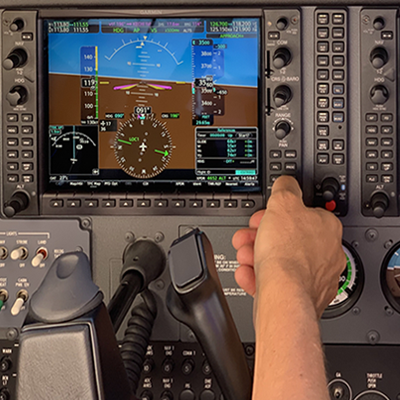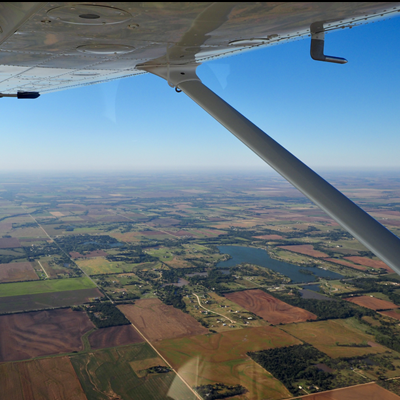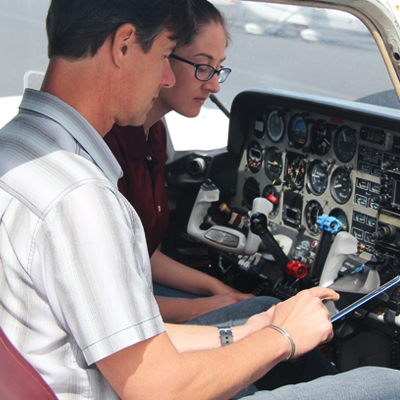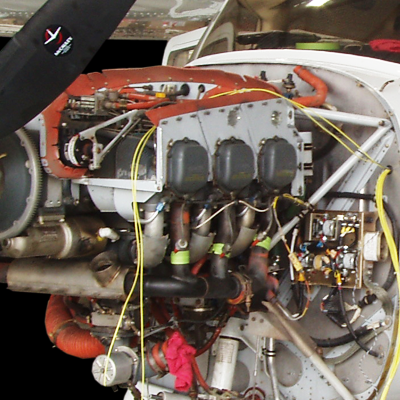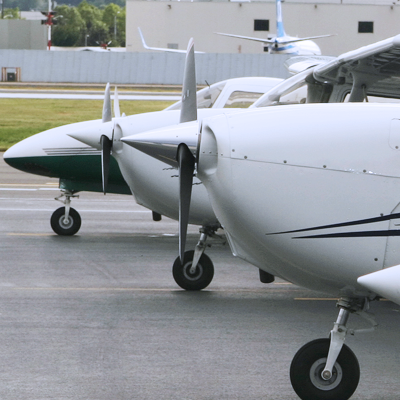How to Become a Pilot #2: Where Will You Learn?
How to Become a Pilot
- Getting Your FAA Medical Certificate
- Where Will You Learn?
- Choosing Your Instructor (CFI)
- Student Pilot Certificate, Flight Time & Aviation Scholarships
- Pilot Ground School & Knowledge Exam
- What’s in a Pilot’s Flight Bag?
- Maneuvers & Your First Solo
- Advanced Maneuvers & Your First Solo Cross-Country
- 4 Money-Saving Tips
- Acing Your Private Pilot Checkride
- You’re a Private Pilot - What’s Next?
In this video, learn when to choose a Flight School, a solo CFI, Flying Club, or even buy an airplane.
What Are Your Flight Training Options?
There are four main ways to begin your flight training, each with its own pros and cons. The best choice depends on your goals, schedule, budget, and personal learning style. Let’s take a closer look:
1. Enroll in a Flight School
A popular and structured option is to attend an FAA-approved flight school (aka, pilot school). These institutions, especially Part 141 flight schools (more on this term, “Part 141”, below), follow a standardized curriculum and often offer accelerated training paths. Some are even part of university aviation programs or career academies.
Benefits:
- Structured syllabus with milestones
- Access to a fleet of training aircraft
- On-site instructors and scheduling staff
- Often eligible for financial aid, GI Bill®, or student loans
- Can reduce required flight hours for certification (Part 141)
Considerations:
- Typically more expensive due to overhead costs
- May feel rigid or less customizable
2. Train with an Independent Certificated Flight Instructor (CFI)
If you're looking for a more flexible, personalized approach, hiring an independent flight instructor (or, CFI) might be right for you. These instructors, operating under Part 61 rules, offer one-on-one training—often at your pace and on your schedule.
Benefits:
- More scheduling flexibility
- Personalized attention
- May cost less than formal schools
- Ideal for working professionals or hobbyists
Considerations:
- Requires more self-motivation
- May lack structured milestones unless you create them together
Looking for a CFI near you? We’d recommend you visit your local airport and ask around—many instructors are based at general aviation airfields and are happy to meet with new students.
3. Join a Flying Club
Flying clubs are member-based groups that share access to airplanes and aviation resources. Clubs are great for people who want to train affordably and be part of a community of fellow aviation enthusiasts.
Benefits:
- Lower aircraft rental rates
- Community atmosphere
- Some clubs offer in-house instructors
- Great way to stay involved even once you’re a pilot
Considerations:
- Limited aircraft availability depending on demand
- May require a membership fee and monthly dues
While there isn’t a single national database for clubs, a quick internet search (e.g., “flight school near me” or “flying lessons near me”) will usually turn up local results.
4. Buy Your Own Training Aircraft
It may sound surprising, but some students choose to purchase their own aircraft for training. While the upfront cost is significant, long-term ownership can offer major benefits, especially if you plan to continue flying regularly after earning your certificate.
Benefits:
- Unlimited access to your own aircraft
- Familiarity with a single airplane
- Great investment for long-term aviators
Considerations:
- Upfront cost (though used trainers like a Cessna 150 or Piper Cherokee can be relatively affordable)
- Maintenance, hangar, and insurance costs
- Must still hire a CFI to conduct your training
Dreaming of owning your own bird? Browse listings at Trade-A-Plane or Controller to get a sense of what’s available.
What’s the Difference Between Part 61 and Part 141 Flight Training?
As you research training options, you’ll often see the terms “Part 61” and “Part 141.” These refer to the parts of the Federal Aviation Regulations (FARs) that govern flight instruction.
- Part 141 schools follow an FAA-approved curriculum and often require fewer total hours (e.g. 35 instead of 40 for Private Pilot), but training must follow a specific structure and schedule.
- Part 61 instructors or schools offer a more flexible learning experience. The FAA mandates a minimum of 40 hours for a Private Pilot certificate, but you have more control over pacing and scheduling.
Which is better? Neither is universally “better”—it depends on what works for you. Some students thrive in a structured academy, while others prefer being self-directed as well as the flexibility of training around their busy schedule.
Start Strong with Online Ground School
No matter which training path you choose, building a strong knowledge foundation before you get in the cockpit will make your flight lessons easier and cheaper. That’s why so many students begin with King Schools' Private Pilot Ground School & Test Prep course.
Get instant access here: King Schools Private Pilot Ground School


